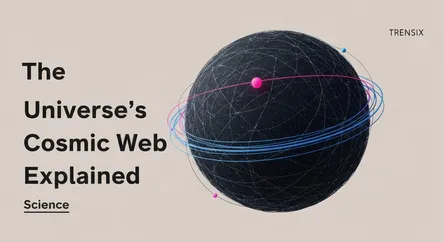Science
The Universe's Cosmic Web Explained

Explore the cosmic web, the vast network of galaxies, clusters, and voids that forms the large-scale structure of our universe. Learn how it formed.
What is it?
The large-scale structure of the universe, often called the "cosmic web," is the largest pattern in existence. It's a vast network of galaxy clusters, filaments, and sheets interwoven around immense, near-empty regions known as voids. This web isn't random; it's a result of gravity acting on tiny density fluctuations from the early universe. Dark matter provides the underlying scaffold, and the visible matter we see—galaxies and stars—has accumulated along its densest strands, revealing that matter is not uniformly distributed but is instead organized into this beautiful structure.
Why is it trending?
Mapping this structure is at the forefront of modern cosmology. Advanced surveys and powerful instruments like the James Webb Space Telescope are providing increasingly detailed maps of the cosmic web. These observations allow scientists to test the standard model of cosmology, which explains how the universe evolved. By studying the distribution of galaxies and the shapes of voids, researchers can better understand the mysterious roles of dark matter and dark energy, the dominant components shaping the universe's ultimate fate and expansion.
How does it affect people?
While it has no direct daily impact, studying the cosmic web helps answer fundamental questions about our cosmic origins. Understanding this grand architecture pieces together the universe's history from the Big Bang to today. This pursuit drives technological innovation in telescopes and data analysis. Ultimately, unraveling the secrets of the large-scale structure provides a profound perspective on the universe's evolution and the fundamental laws that govern everything within it, including ourselves.